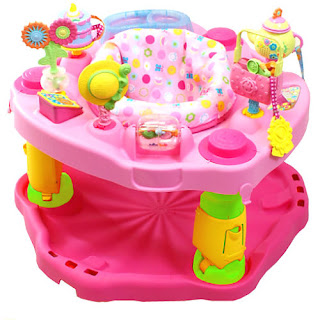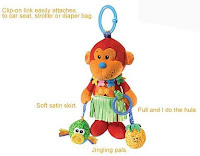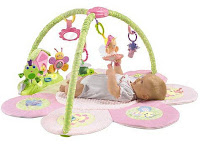Saturday, August 9, 2008
Thursday, July 31, 2008
Sex Sells, But At What Price?

In today’s society a person cannot turn on the TV, drive down a highway, or open a magazine without being bombarded with advertisements. They are literally everywhere you turn especially those portraying women in negative gender roles and as objects. In her article, Image Based Culture: Advertising and Popular Culture, Jhally says, “Sexuality provides a resource that can be used to get attention and communicate instantly” (Jhally 253). Basically, as the cliché goes, sex sells. Using sex to sell products has obviously become embedded in our culture but what has caused these companies to think that selling women as a commodity is acceptable?
Society has become so desensitized to sexualized advertisements that they are not even given a second thought. These ads have become absorbed into our culture and are exploited now more than ever. As Jhally explains, “The iconography of the culture, perhaps more than any previous society, seems to be obsessed with sexuality. The end result is that the commodity is part of an increasingly eroticized world” (Jhally 253). The fact that sex indeed sells has prompted advertising agencies to zone in on this option and has only increased the number of sexualized ads exponentially in recent decades. It has come to the point where the women being objectified are featured as the commodity more than the product that is actually being advertised.
While many people are quick to complain about the advertisements objectifying women, no one is willing to take a stand against them. By buying products from companies who create these sexualized advertisements, we are telling them that their advertising strategy is working. As Hesse-Biber states, “As long as a woman viewed her body as an object, she was controllable and profitable” (Hesse-Biber 40). If women are putting themselves out there to be objectified and thought of as a commodity then there is nothing to tell men and the rest of society differently. Until women take a stand against these types of advertisement then their bodies will continue to be used as a selling agent.
~~~~~~~~~~~~~~~~~~~~~~~~~~~~~~~~~~~~~~~~~~~~~~~~~~~~~~~~~~~~~~~~~~~~
Works Cited
Hesse-Biber, Sharlene Nagy. The Cult of Thinness
Jhally, Sut. "Image-Based Culture." Gender Race and Class in Media: a Text Reader. Thousand Oaks: SAGE Publications, 2003.
Thursday, July 24, 2008
What Teaches Girls To Be Made of "Sugar and Spice" vs. Boys To Be Made of "Snails and Puppy Tails"?
The first toy that was looked up was the Leapfrog LittleTouch LeapPad. The description accompanying the toy exclaimed “now in Pink!” seeing as the toy was originally only offered in b lue. The way that the website presented the description was basically suggesting that it is now acceptable for girls to own this product because it now comes in their “favorite” normative color. Additionally, in the picture depicting the LeapPad the story shown being read involves a cow baking pies in a kitchen. Even as infants, girls are already being shown that it is normative for a woman to be a homemaker and cook. This contrasts to how boys’ toys illustrate how a man should work out of the home and demonstrates society’s normative patriarchal ideals. As Johnson explains, patriarchy is”about defining women and men as opposites, about the "naturalness" of male aggression, competition, and dominance and of female caring, cooperation, and subordination” (Johnson 94). Being exposed to toys that depict such patriarchal ideals will have an impact on their behavior when they become older.
lue. The way that the website presented the description was basically suggesting that it is now acceptable for girls to own this product because it now comes in their “favorite” normative color. Additionally, in the picture depicting the LeapPad the story shown being read involves a cow baking pies in a kitchen. Even as infants, girls are already being shown that it is normative for a woman to be a homemaker and cook. This contrasts to how boys’ toys illustrate how a man should work out of the home and demonstrates society’s normative patriarchal ideals. As Johnson explains, patriarchy is”about defining women and men as opposites, about the "naturalness" of male aggression, competition, and dominance and of female caring, cooperation, and subordination” (Johnson 94). Being exposed to toys that depict such patriarchal ideals will have an impact on their behavior when they become older.
The next toy analyzed was the Evenflo Exersaucer Mega – Tea for 1-2-3. Besides the toy being an array of pinks, greens, and yellows, all normative colors for girls, it is complete with an attached bonnet, purse, teapot, and flowers for the baby to play with. At an age where the baby doesn’t even realize what these items are, besides neat thing to hit around and bite on, they are subconsciously being told that when they become older these are the types of toys to associate with. The Evenflo Exersaucer is insinuating stereotyped behavior that all little girls like to dress-up and play tea party. Toys that depict what is normative for girls or boys to play and associate with enforce gender socialization, which is defined by Newman as “…the way that people learn to act in accordance with the rules of a particular society” (Newman 108). On the “Toys ‘R’ Us” website, the boys’ toys are characterized by bugs, cars, and primary colors while the girls’ are butterflies, princesses, and pastels. These examples of gender socialization are what put boys in the direction of being “rough and tough” and girls in the mind frame of being “prim and proper”.
doesn’t even realize what these items are, besides neat thing to hit around and bite on, they are subconsciously being told that when they become older these are the types of toys to associate with. The Evenflo Exersaucer is insinuating stereotyped behavior that all little girls like to dress-up and play tea party. Toys that depict what is normative for girls or boys to play and associate with enforce gender socialization, which is defined by Newman as “…the way that people learn to act in accordance with the rules of a particular society” (Newman 108). On the “Toys ‘R’ Us” website, the boys’ toys are characterized by bugs, cars, and primary colors while the girls’ are butterflies, princesses, and pastels. These examples of gender socialization are what put boys in the direction of being “rough and tough” and girls in the mind frame of being “prim and proper”.
The third toy on the list was the Fisher-Price Dreamland Soother in, once again (surprise, surprise), pink. The toy is described as an “enchanting scene with a fairy princess, hopping frog and fluttering butte rflies.” Again, we have another normative stereotype that all girls should grow up to want to be princess and dance upon clouds with butterflies until they marry their prince, who is disguised as a frog. Moreover, the princess shown is white and there is no option for this toy to come in any other race. Even at the infant stage, there are toys portraying hegemonic ideals. As Lull explains, “the mass media help[s] create an impression that even society’s roughest edges ultimately must conform to the conventional contours of dominant ideologies” (Lull 64). To a young black girl who sees this toy, it is suggesting that ideal beauty is white and that only white girls are worthy of being princesses. Another Soother offered by Fisher-Price is the Rainforest Waterfall Peek-a-Boo Soother. While the Dreamland Soother shows a princess in the clouds, the Rainforest Soother depicts an outdoors jungle scene. As mentioned previously, it suggests that normative girls are wrapped up in fairytales while normative boys prefer the adventures of the outdoors.
rflies.” Again, we have another normative stereotype that all girls should grow up to want to be princess and dance upon clouds with butterflies until they marry their prince, who is disguised as a frog. Moreover, the princess shown is white and there is no option for this toy to come in any other race. Even at the infant stage, there are toys portraying hegemonic ideals. As Lull explains, “the mass media help[s] create an impression that even society’s roughest edges ultimately must conform to the conventional contours of dominant ideologies” (Lull 64). To a young black girl who sees this toy, it is suggesting that ideal beauty is white and that only white girls are worthy of being princesses. Another Soother offered by Fisher-Price is the Rainforest Waterfall Peek-a-Boo Soother. While the Dreamland Soother shows a princess in the clouds, the Rainforest Soother depicts an outdoors jungle scene. As mentioned previously, it suggests that normative girls are wrapped up in fairytales while normative boys prefer the adventures of the outdoors.
The next toy was Infantino’s Mallory the Monkey. At first glance, besides the toy being named “Mallory”, it didn’t appear to be too gender specific. Then under related toys there was “Dylan the Duck”, also made by Infantino which then clearly divided the toys into being orientated for a specific gender. Additionally, in Mallory’s description she is described as having “jingling pals” while Dylan’s are described as “rattling pals”. Using different terminology to describe the two toys enforces the idea that they are
besides the toy being named “Mallory”, it didn’t appear to be too gender specific. Then under related toys there was “Dylan the Duck”, also made by Infantino which then clearly divided the toys into being orientated for a specific gender. Additionally, in Mallory’s description she is described as having “jingling pals” while Dylan’s are described as “rattling pals”. Using different terminology to describe the two toys enforces the idea that they are gender specific. When something is thought to “rattle” it comes across as sounding louder and rougher than something that jingles, which is associated with a faint and softer sound. Mallory is also described as having a “soft satin skirt” compared to Dylan’s “crinkled surfboard”. “From an early age, [children] are like "gender detectives/ searching for cues about gender, such as who should and shouldn't engage in certain activities, who can play with whom, and why girls and boys differ” (Newman 113). Such slight changes in their descriptions, like these, enforce normative gender roles and hint to children about how to behave like a girl or to behave like a boy.
gender specific. When something is thought to “rattle” it comes across as sounding louder and rougher than something that jingles, which is associated with a faint and softer sound. Mallory is also described as having a “soft satin skirt” compared to Dylan’s “crinkled surfboard”. “From an early age, [children] are like "gender detectives/ searching for cues about gender, such as who should and shouldn't engage in certain activities, who can play with whom, and why girls and boys differ” (Newman 113). Such slight changes in their descriptions, like these, enforce normative gender roles and hint to children about how to behave like a girl or to behave like a boy.
The final toy on the list is the Fisher-Price Musical Fairyland Gym. It once again prompts normative gender roles with its flower shaped mat and pastel  colors. The gym is also described by the website as “delightful” and features “dancing lights [and] sweet music.” Same as the previous paragraph, “soft words” are normative when describing girls or things associated with girls. Additionally, the gym is priced at $74.99, making it one of the more expensive playmats on the “Toys ‘R’ Us” website. Compared to one of the cheaper playmats on the website for $29.99, made by Baby Genius, the Fisher Price product is larger in size, has more activities for the infant to play with, and is geared towards girls. The Baby Genius model is smaller and can be used for either boys or girls, even though the primary colors and frog shaped mat suggest more normative masculine qualities. However, it still accomplishes the same purpose as the more expe
colors. The gym is also described by the website as “delightful” and features “dancing lights [and] sweet music.” Same as the previous paragraph, “soft words” are normative when describing girls or things associated with girls. Additionally, the gym is priced at $74.99, making it one of the more expensive playmats on the “Toys ‘R’ Us” website. Compared to one of the cheaper playmats on the website for $29.99, made by Baby Genius, the Fisher Price product is larger in size, has more activities for the infant to play with, and is geared towards girls. The Baby Genius model is smaller and can be used for either boys or girls, even though the primary colors and frog shaped mat suggest more normative masculine qualities. However, it still accomplishes the same purpose as the more expe nsive Fisher-Price gym. The difference in price for the gyms presents the socioeconomic factor because those of a lower social class may not have $74.99 to splurge on a playmat when a similar product is being marketed for about $45 cheaper. At that price you could buy two of the Baby Genius playmats for less than the price of the Fisher-Price one. Therefore, the Fisher-Price product is not going to be accessible to everyone shopping for this particular kind of gift.
nsive Fisher-Price gym. The difference in price for the gyms presents the socioeconomic factor because those of a lower social class may not have $74.99 to splurge on a playmat when a similar product is being marketed for about $45 cheaper. At that price you could buy two of the Baby Genius playmats for less than the price of the Fisher-Price one. Therefore, the Fisher-Price product is not going to be accessible to everyone shopping for this particular kind of gift.
Overall, gender is a learned concept that is taught from birth. Children’s toys from early on are already enforcing what society considers normative gender roles. Children, as they grow up, will begin at act out the gender socializations they have picked up on subconsciously as a infant. As much as one can try to suppress the message of the normative gender roles portrayed in children's toys they will still and always will exist.
~~~~~~~~~~~~~~~~~~~~~~~~~~~~~~~~~~~~~~~~~~~~~~~~~~~~~~~~~~~~~~~~~~~~
Works Cited
Dines, Gail, and Jean M. Humez. Gender, Race, and Class in Medai. 2. Thousand Oaks, CA: SAGE Publications, 2003.
Johnson, Allan. Patriarchy, The System: An It, Not a He, a Them, or an Us.
Lull, James. "Hegemony." Gender, Race, and Class in Medai. 2003. Dines, Humez. Thousand Oaks, CA: SAGE Publications, 2003.
Newman, David. Identities and Inequalities: Exploring the Intersections of Race, Class, Gender, and Sexuality.
Images (in order of appearance)
http://www.toysrus.com/product/index.jsp?productId=2266016#prod_prodinfo
http://www.toysrus.com/product/index.jsp?productId=2901055#prod_prodinfo
http://www.toysrus.com/product/index.jsp?productId=2455073http://www.toysrus.com/product/index.jsp?productId=2965582#prod_prodinfo
http://www.toysrus.com/product/index.jsp?productId=2333404
http://www.toysrus.com/product/index.jsp?productId=2965583#prod_prodinfo
Friday, July 18, 2008
Family Guy Analysis
My first example is when Meg Griffin asks Craig (a self proclaimed “rebel”) out on a date. In a patriarchal society, it is normative for the boy to ask the girl out a date and to assert his masculinity. However, this scene shows counter-hegemonic ideals since Meg is the one asserting authority and self confidence by flipping the normative gender roles. This counter-hegemonic representation, however, is quickly flipped when Craig rejects Meg claiming that he “doesn’t go out with dudes”. He could have simply rejected her proposal for a date but instead had to assert himself as the masculine, dominant male in the situation.
The second
 example involves the reaction of Lois (Meg’s mother) to her daughter being turned down. Instead of Lois telling Meg things like beauty is skin deep and that she can find someone better to date, she exerts hegemonic ideals by taking Meg to the mall to buy new clothes to make her more attractive. Lois then selects items for Meg such as low-rider jeans and pink baby tee’s with glittery phrases like “little slut”, “porn star”, and “sperm dumpster” written across the chest. Lois is sending the message that this is a patriarchal society and that a girl needs to exploit herself to get a date. Moreover, she insists Meg receive a complete makeover including dyed blonde hair, midriff bearing tops, high heels, and tons of makeup.
example involves the reaction of Lois (Meg’s mother) to her daughter being turned down. Instead of Lois telling Meg things like beauty is skin deep and that she can find someone better to date, she exerts hegemonic ideals by taking Meg to the mall to buy new clothes to make her more attractive. Lois then selects items for Meg such as low-rider jeans and pink baby tee’s with glittery phrases like “little slut”, “porn star”, and “sperm dumpster” written across the chest. Lois is sending the message that this is a patriarchal society and that a girl needs to exploit herself to get a date. Moreover, she insists Meg receive a complete makeover including dyed blonde hair, midriff bearing tops, high heels, and tons of makeup.The third example is the hegemonic ideals of homosexuality, specifically those of gay men. When Peter’s band meets before going to their first performance, one member notes that they should have worn matching outfits to avoid looking like a bunch of “queers”. Also following that comment, once the band arrives at the gig destination there is a scene involving the Tin Man from The Wizard of Oz being gay. The Tin Man pretends to keep falling to either side until Dorothy moves and he can collapse onto the Scarecrow. The scene showcases a stereotype that gay men are sly when “putting the moves” on a heterosexual male and straight men should watch for gay men trying to trick them.
The fourth example is the hegemonic ideology of prisoners. When Peter and his band have a gig that goes horribly wrong at a state penitentiary th
 e prisoners break out into a riot. Each of the prisoners is either sporting a tattoo, eye patch, facial scar, or bandanna which is the normative stereotype of males in jail shown by the media. Additionally, the prisoners exert patriarchy when they notice Meg and one even goes as far to say that she’s so beautiful he could strangle her all night. This also stereotypes male prisoners as being deprived of female contact and that all prisoners want to take advantage of teenage girls.
e prisoners break out into a riot. Each of the prisoners is either sporting a tattoo, eye patch, facial scar, or bandanna which is the normative stereotype of males in jail shown by the media. Additionally, the prisoners exert patriarchy when they notice Meg and one even goes as far to say that she’s so beautiful he could strangle her all night. This also stereotypes male prisoners as being deprived of female contact and that all prisoners want to take advantage of teenage girls.The fifth example is when Brian barks uncontrollably at the black record producer, Dr. Diddy. In this hegemonic representation, Brian quickly becomes defensive of his actions claiming that he has nothing against black people and that it was a reaction passed down to him by his father. He even goes as far as to assure the Griffins after Diddy leaves that he is not racist and in fact votes democrat. On top of that Dr. Diddy is shown as a stereotypical black man, adorned with huge “bling” around his neck, a backwards hat, sunglasses, and uses dialect such as “yo” and “aight”. However, this stereotyped is challenged when Diddy reveals he has a degree in optometry.
~~~~~~~~~~~~~~~~~~~~~~~~~~~~~~~~~~~~~~~~~~~~~~~~~~~~~~~~~~~~~~~~~~~~
Family Guy. “Don’t Make Me Over.”
Season 4, Volume Three, Disc One, DVD. 6/5/05
Twentieth Century Fox Film Corporation: Beverly Hills, CA. 2005.

